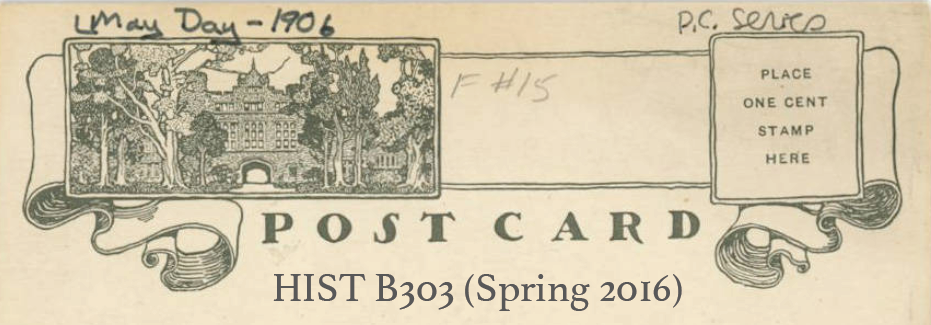While reading “Scarcity or Abundance? Preserving the Past in a Digital Era” by Roy Rosenzweig, I was surprised that many historians wouldn’t want to preserve all of the materials of the digital era because, since historians are used to working with a scarcity of sources, such an abundance of sources seems overwhelming. While reading the article, I was fascinated by the different methods of preservation of digital materials available and eager to learn more about how digital records could be preserved. To me, preserving more materials automatically seemed better, because even if not everything is relevant at least then you have everything available to decide what is relevant. However, I’ve never been trained in historical research methodologies and I didn’t realize, until reading this article, that historians are expected to look at every source available on a topic instead of using sampling techniques. As a sociology major, I’ve been trained to use different sampling techniques as part of different research methodologies and to interrogate the benefits and limits of each sampling technique. While I suppose that sampling can never be as complete as using every available source, sociologists are used to working from an abundance of resources, since oftentimes we study groups of people who are still alive and therefore are rarely able to talk to every member of a group. Sampling works for the discipline of sociology because sociologists assume that, given an adequate sample size in relation to the population of the group being studied, the diversity of views and experiences of a group will be represented. Would historians feel comfortable making the same assumption–that views and experiences are repetitive enough within certain groups that sampling is a more than adequate way of portraying a group or event without being overwhelmed by information? Or is the discipline of history more concerned with studying the lives and interactions of individuals–embedded in social context of course, but still focused on different people’s actions and impacts–and therefore wouldn’t buy into sociology’s tendency to view people in the aggregate?
I also wonder if some historians engage in forms of sampling already, without labeling it as such. I’m thinking, for example, of Erin Bernard’s Philadelphia Public History Truck. When she goes into communities, she makes an effort to talk to as many people from as many groups as possible, but I can’t imagine that she talks to every person in a community, and I don’t think that’s her goal. Instead, she seeks to capture the experiences of different groups in a community by interviewing and sharing individual stories that espouse those experiences and viewpoints. That’s pretty much what I’m doing for my sociology thesis interviews–not talking to every member of the group, but interviewing enough diversity of members that different experiences based on social locations are represented. I wonder what, if any, sampling methodologies Erin uses when deciding who to interview? I imagine her process would fall, at least partly, under what sociologists would call snowball sampling–having people you’ve already interviewed refer you to future people to interview. I know that her historical research process is different from historians working solely with archival records, but I think that sampling–not necessarily in a strictly sociological way, but having historians develop their own sampling techniques that fit their research approaches while still reducing the amount of potentially repetitive sources they have to go through–has a lot of potential to help historians deal with the problems of abundance without sacrificing record preservation.
